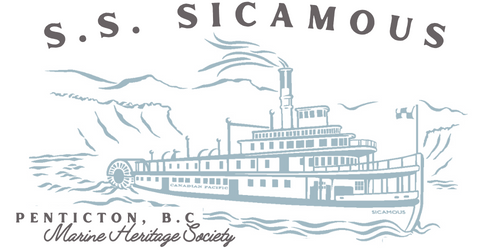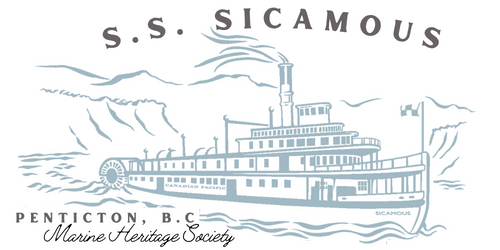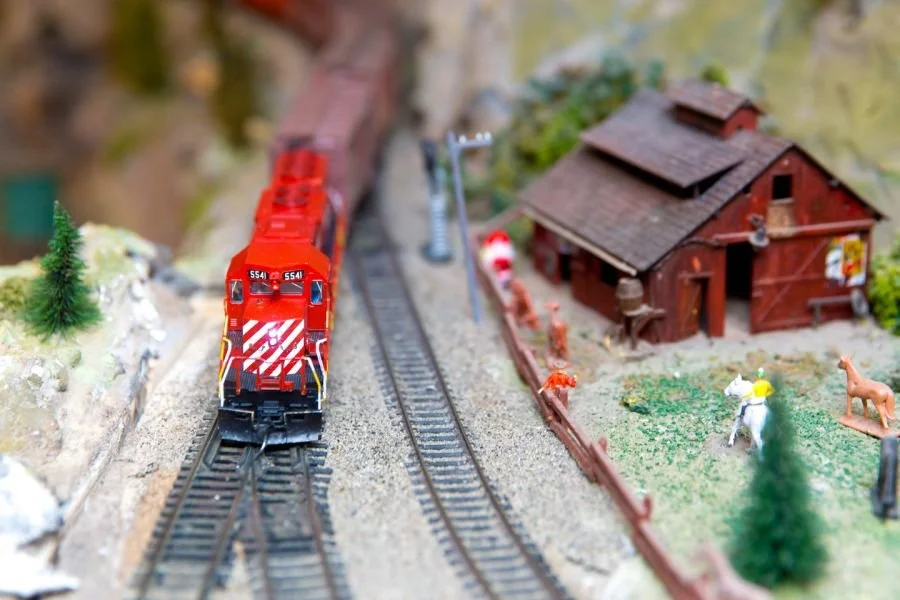FORMER CREW MEMBER VISITS S.S. NARAMATA
On August 3, 2014, two elderly couples came into the S.S. Sicamous with a special request: to tour the S.S. Naramata, because one of the gentlemen, Abe, had worked on the tug from 1954 to 1957.
The memories came flooding back as he boarded the Naramata, prompting many unique and interesting anecdotes. Abe named several stops along the lake, including Penticton, Naramata, Peachland, and Okanagan Landing, and he said they would occasionally go to the farthest stop, Vernon. The Naramata transported fruit, which would be transferred to rail once they reached the shore. However, the fruit would sometimes go straight to the cannery in cases such as Peachland, which had a large one.
Abe had a witty sense of humor, making remarks such as “I don’t remember the shower—I bet I didn’t use it much’’ when passing by. In the boiler room, he told how the boiler was always kept red-hot by firemen shovelling the coal in to produce steam that would run to the generators and engines to run propellers. He never shovelled coal, but often cleaned in the boiler area and remembered it being very hot. He had a fourth-class engineering license, meaning he could do some regulation work, but fourth-class was the lowest level of engineering and higher classes were preferred.
The group then proceeded to the crew’s quarters. Despite the steep stairs, Abe ventured down into his old room and continued to share his wealth of knowledge. There were bunk beds lining both sides of the sleeping quarters. It was hot and crowded, as twelve men could have been sleeping there at a time. Abe noted that restoration had required the beds to be dismantled, but the quarters were much tidier during his time there. The quarters presented inconveniences: the men had to go outside to use the bathroom, and the top bunk was so close to the ceiling that the man sleeping there often bumped his head. However, they never felt like they were suffering and he only had good memories of his years on the Naramata. One of these was that the crew would often jump onto the barges and watch the sunset on the lake, which Abe described as being “like a dream.” This was possible because the barges were chained so tightly to the tug that the vessels seemed like they had melded into one. He did, however, note that the barges were made for work and not entertainment.
At the front of the crew’s quarters was a separate room for the cook. The chef was like the captain to many of the crew members and everyone knew to follow his orders. He was a large man in his late-thirties or early-forties who had a strong stance and meant his words when he threatened to throw someone overboard—he would pick him up, clothes and all, and into the water the troublemaker went. However, the men respected the cook for feeding them and they would bolt up the stairs when meals were called. The food was always fresh and delicious, and the cook made just about anything. Abe used breakfast as an example, saying it included hash browns, bacon, eggs, pancakes, and incredible toast. The kitchen was small, but ten to twelve men would eat there at the same time. The cook would keep the order, preventing horseplay and food fights. Abe recounted one instance when he was praying before his meal and the other men were making fun of him. The cook told them that the next man who laughed would be thrown overboard, and Abe was able to pray in peace from then on.
Finally, the party headed up to the pilothouse. Abe did not used to frequent this part of the ship and was surprised that the wheel was so big. He was thrilled to have revisited the beloved Naramata and expressed his thanks to Heritage Park, although he was the one who shared his precious memories and stories so we could record a firsthand account of life on this historical steamship.
RELATED ARTICLES




